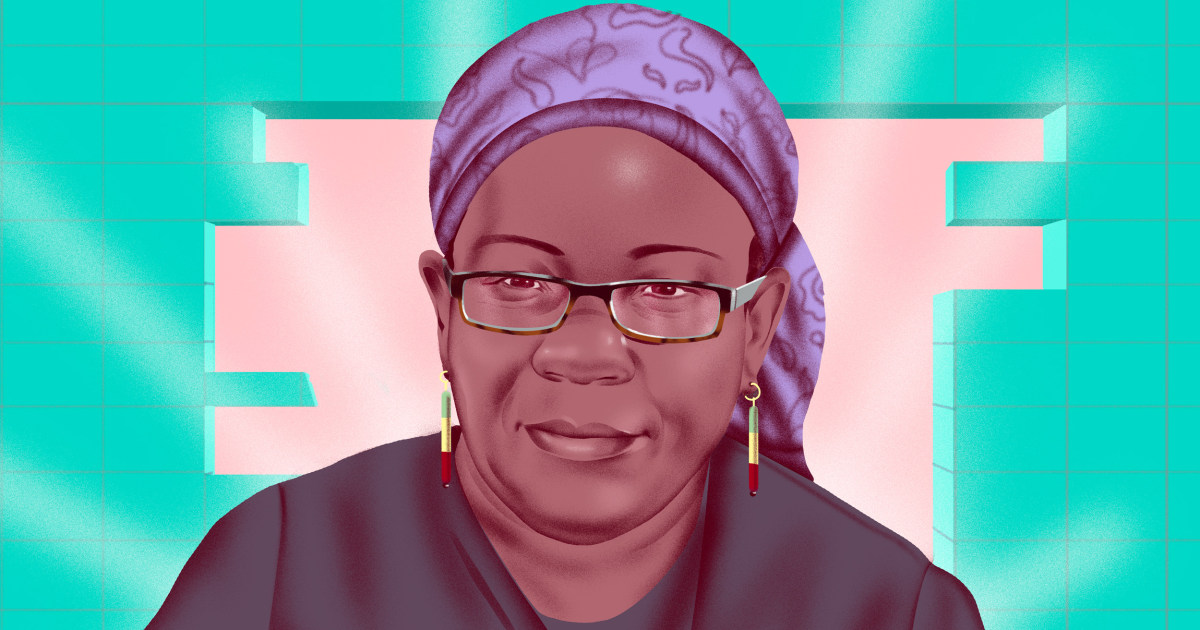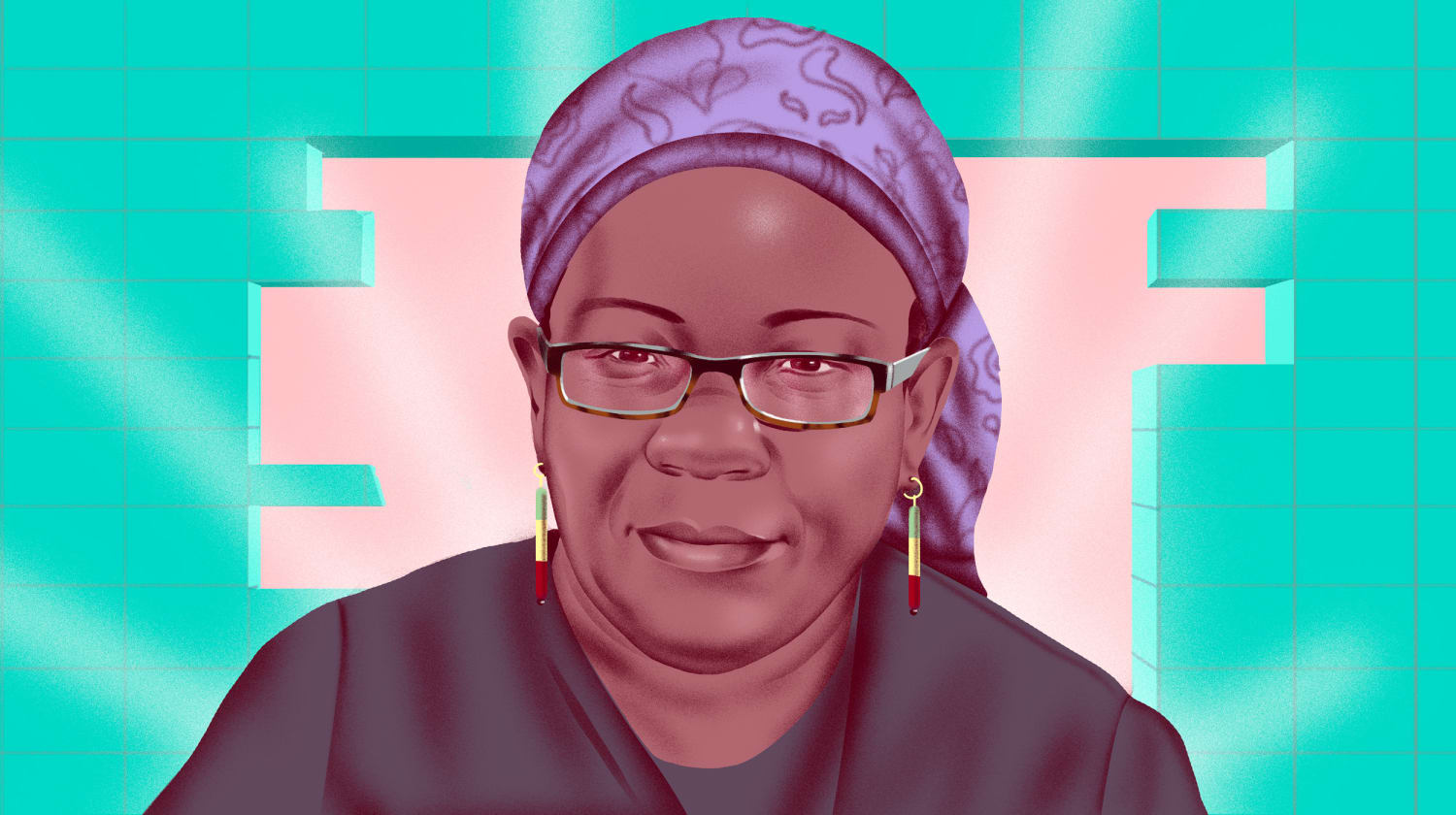
Last summer, thousands across the country gathered in the streets, painting “BLACK LIVES MATTER” on asphalt, marching with fists raised and shouting into bullhorns after the deaths of George Floyd, Breonna Taylor and several other people. Many of the chants were simple: “No justice, no peace!” and “Black lives matter!” But a new declaration stood out: “Defund the police.”
It was a moment Mariame Kaba always knew would come.
“All of a sudden, people had a real interest in abolitionist thinking and abolitionist organizing,” Kaba said. She said she believed abolishing the prison-industrial complex, sometimes known as the PIC, “would be popular eventually. It was my belief that more people would want to engage an abolitionist vision and practice. I’ve always believed that. But I still think PIC abolition is an unpopular view … and we have a lot of work to do to bring more people in.”
Kaba has spent most of her life as a PIC abolitionist, one who believes incarceration, policing, surveillance and punishment-driven social approaches have no place in a healthy, thriving society. Kaba, popularly known online as “Prison Culture,” has spent decades organizing around abolitionist goals, and she cemented herself as one of the world’s most prominent advocates, organizers and political educators of the framework.
She is the founder of Project NIA, an advocacy organization working to end youth incarceration, and she has founded, co-founded or helped lead several other abolitionist campaigns, including Reparations Now — securing reparations for survivors of police violence in Chicago — the Chicago Community Bond Fund, the Chicago Freedom School and Survived & Punished New York. She was also instrumental in the efforts to free Marissa Alexander in Florida and Bresha Meadows in Ohio, women who were imprisoned in the last decade after they defended themselves against gender violence.
Kaba said her phone began ringing off the hook over the summer as major media outlets tapped her to make sense of “defund the police” and to explain PIC abolition. For her, the political framework is a “vision of a restructured society and world,” one without prisons, jails and immigrant detention centers.
“It’s trying to bring into being a world where we have everything that we need to survive and thrive,” Kaba said. “That includes food and shelter and education and health and art and beauty and all the things. That’s what PIC abolition is as a framework and a practice.”
Even as broader conversations about PIC abolition began, Kaba turned down TV appearances and speaking engagements. Instead, she compiled the learnings from her life’s work into a book: “We Do This ‘Til We Free Us.”
“It felt like it was the right time to put something out into the world,” Kaba said, adding that she wanted to create an accessible introduction to abolition that was timely but not academic. “It was, like, ‘Where is a book that people who just want to walk through a door and get a sense of PIC abolition would be? What could they pick up that’s current?’ And I thought this book could be useful for that.”
The collection of interviews, essays and other writings by Kaba gives an in-depth look at what it means to be an abolitionist, tackling commonly asked questions like “If prisons don’t exist, what will we do with the murderers and rapists?”
The book, edited by the author and sociologist Tamara Nopper, has drawn praise from Ruth Wilson Gilmore, Andrea Ritchie and other renowned abolitionist thinkers. As much as it is an educational resource, “We Do This ‘Til We Free Us” contextualizes abolition as an accessible and very possible goal. That, Kaba said, is one of her aims for the book, which is scheduled for release Tuesday by Haymarket Books.
“There are two audiences in mind. One is people who might not know a lot about PIC abolition and are looking for a way to enter into the discussion,” Kaba said. “The second are current abolitionist organizers who are running abolitionist campaigns. … So you don’t have to be somebody who knows nothing, and you don’t have to be somebody who knows everything.”
While Kaba is known on Twitter for her insights and commentary, she understands that most of the real work happens offline. In her various organizational roles, Kaba works with other organizers to support incarcerated people by raising bail and commissary funds, coordinating visits and more.
She promotes and facilitates transformative and restorative justice processes and helps lead campaigns for people who face criminal punishment tied to actions like self defense from abusive partners — also known as criminalized survivors — all while doing research and publishing toolkits, zines and other resources to educate the public. But as beloved an organizer as she is, Kaba consistently refuses to center herself in the spotlight — she often chooses not to be photographed or to appear in videos. For a long time, she even refused to put her name on her writings and resources. Despite being well known, Kaba is a deeply private person.
“I’m very conscientious about not being the main person anywhere,” Kaba said. “I don’t want that. I want to work with other people. I very carefully and deliberately choose how I’m going to show up in the world. I always want to make sure I’m always opening the door for other people. That, to me, is really important. We always need more people.”
She said she also understands the danger of living out her radical politics: “I know a lot of people hate my guts. I’m very clear. I’m not delusional about what’s really going on out there.”
Kaba’s childhood helped lay the groundwork for her passion for justice and liberation. Her father worked for the United Nations and was a part of Guinea’s independence struggle, shaping Kaba into the internationalist she is today. Her father spoke openly about his politics, and Kaba was surrounded by books in her family’s home. Her mother was a deeply religious woman who focused on charity and mutual aid — a centuries-old radical political practice that emphasizes solidarity and interdependence to meet people’s basic needs — for Kaba and her six siblings. Kaba traveled with her family often, and she learned to speak different languages in her multilingual household. Her home was filled with books and African art, only adding to the joy of visits to her family in Africa.
“I recognize that a huge part of my belief in myself as a person was cultivated by the fact that I saw myself as Black and that it was just who I was,” Kaba said. “It was a break for me to come into my preteen years and begin to really recognize that, in this country, Blackness was seen in negative, unequal ways. But my childhood gave me so many tools, about being proud of myself, of my family and of my lineage. That was a buffer.”
Kaba came of age in the ’80s on New York’s Lower East Side, where she saw firsthand society’s societal, racial and economic fault lines. She would commute to a privileged Upper West Side high school, which painted a clear picture of the racial disparities that separated her classmates from her friends on the Lower East Side.
Kaba said she developed her politics through reading and her experiences with family and friends who ended up in the criminal legal system. Her teen years were marked by a series of incidents of racialized violence, including the killing of Michael Stewart, a young Black graffiti artist who was beaten to death by New York police in 1983; the Howard Beach murder, in which Michael Griffith, 23, was killed by a racist mob in 1986 in Queens; and the death of Eleanor Bumpurs, whom police shot to death in her home while trying to evict her from her New York City apartment.
The experiences made Kaba think deeply about racialized violence and how the criminal legal system often perpetuates harm. In the mid-’90s, she left New York for Chicago, where she spent 20 years co-founding multiple organizations and projects, with a particular focus on gender violence.
“My process was gradual. I had this sense, always, from the time I was very young, of fairness. I very much wanted things to be fair. It wasn’t until my early 20s when I started to see the patterns of things I’d seen earlier were repeating. I got curious. Why is this the case? I’m a survivor of sexual assault. I had folks in my life who got caught up in the system,” Kaba said. “When I was working in a domestic violence organization … I saw what we were offering people was so limited. We’re not actually addressing the roots of these forms of violence. A lot of folks were like, ‘I don’t want my partner in prison. I don’t want to call the cops.’ That pushed me toward learning about restorative justice. Between anti-violence work and then learning about restorative justice, it was that that opened my imagination and started pushing me toward an abolitionist horizon.”
Restorative justice is a set of practices that work to repair and prevent harm by addressing the needs of all involved in an incident, without calling on police or relying on punitive solutions.
Kaba credits the 2001 joint statement on gender violence and prison abolition from Critical Resistance and INCITE! — both abolitionist organizations — for her feminist abolitionist politics. Now, Kaba is among those who have provided critical educational resources for people interested in PIC abolition.
Kaba said she’s interested not in celebrity or notoriety but simply in bringing people together in pursuit of an abolitionist future — “abolition is a collective project,” she said. “It’s going to take and involve everybody.” And while she identifies her work with Reparations Now as one of her greatest accomplishments, Kaba doesn’t think much about her legacy.
“I don’t think about that at all. I’m always trying my best to shrink the gap between my values and my actions,” Kaba said. “If I died tomorrow, I could tell you right now that I did what I wanted to do. And I tried to do it in a way that brought other people along.”
Follow NBCBLK on Facebook, Twitter and Instagram.
Source: | This article originally belongs to Nbcnews.com









